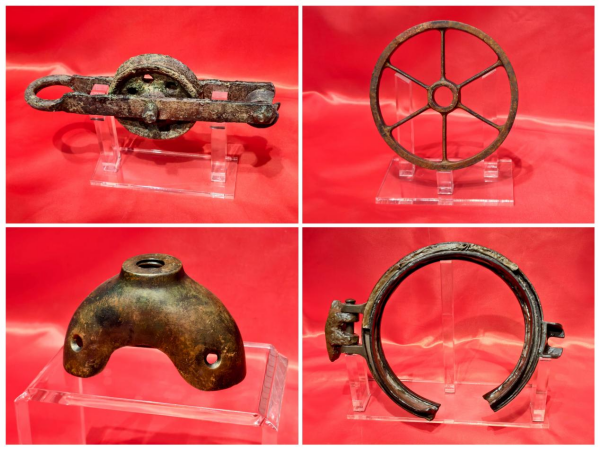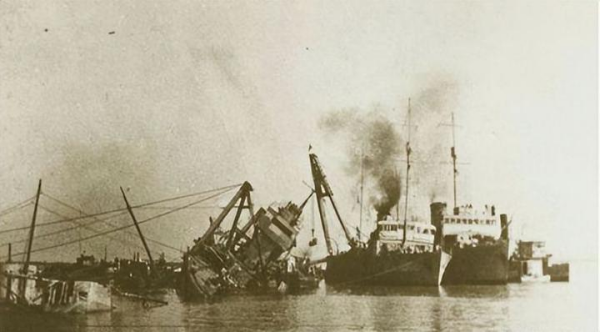The China Merchants Group (CMG) History Museum, nestled atop Weibo Mountain in Shekou, Shenzhen in South China’s Guangdong Province, showcases remnants of rusted ship components salvaged from sunken vessels. These remnants bear witness to the historical impact of the CMG in resisting Japanese aggressors.
On August 13, 1937, as Japanese forces amassed to block the estuary of the Wusong River with the aim of capturing Shanghai and advancing westward along the river, a decision was made to block key waterways by sinking older vessels unsuitable for river navigation at strategic points, effectively impeding the advance of the Japanese navy.

The China Merchants Group History Museum, nestled atop Weibo Mountain in Shekou, Shenzhen in South China’s Guangdong Province, showcases the remnants of rusted ship components salvaged from sunken vessels. [Photo/sasac.gov.cn]
Responding to the call to action, CMG, a pillar of the national maritime transport company, promptly volunteered to join the forces. Between 1937 and early 1939, the company intentionally sank 24 ships at key locations, amounting to 40 percent of its total tonnage, making it the largest contributor of sunken tonnage among national shipping enterprises during the war.
In an effort to minimize losses of commercial vessels, CMG initiated the construction of steel-reinforced concrete ships to replace traditional merchant vessels, a proposal that was swiftly approved. CMG was given a three-month deadline for the mission.
A dedicated team was assembled, including shipbuilding and engineering experts, to swiftly finalize design blueprints and construction sites. The machinery factory of CMG, which was relocated from Shanghai to Wuhan, undertook the mechanical manufacturing of the concrete ships and key components such as inlet and outlet valves.
After more than two months of round-the-clock efforts, four large steel-reinforced concrete ships, each weighing approximately 3,000 tons, were completed and delivered on schedule. Alongside dozens of stone-filled wooden barges and sailboats, these uniquely constructed vessels were promptly deployed to block the river.
It has been proved that the use of these large steel-reinforced concrete ships effectively hindered the Japanese navy's advance, with their blocking capabilities surpassing those of conventional merchant vessels.

A historical photo captures the scene of the sunken vessels. [Photo/sasac.gov.cn]
At the outbreak of the Chinese People’s War of Resistance Against Japanese Aggression in 1937, CMG possessed a total of 53 vessels, totaling 86,380 tons. Through several large-scale operations to sink ships and block harbors, a total of 24 vessels were intentionally sunk, including 18 large river steamers and bulk carriers.
During this decisive war for the nation's survival, CMG actively participated in transporting supplies, evacuating personnel, facilitating intermodal transportation, transporting cultural relics from the Forbidden City, opening new shipping routes, and operating in the Southwest China region.
According to records, from the Battle of Shanghai to the eve of Wuhan's fall, CMG transported over 940,000 military and civilian personnel, along with 470,000 tons of military supplies and commercial goods.
Through the collective efforts of CMG and other shipping companies, many crucial factories, schools, research institutions were safely relocated to the western part of China, mitigating the losses brought by the Japanese aggression. With loyalty and dedication, they forged the strategic lifeline that sustained the prolonged resistance against the Japanese invaders.
(Executive editor: Yuan Ting)